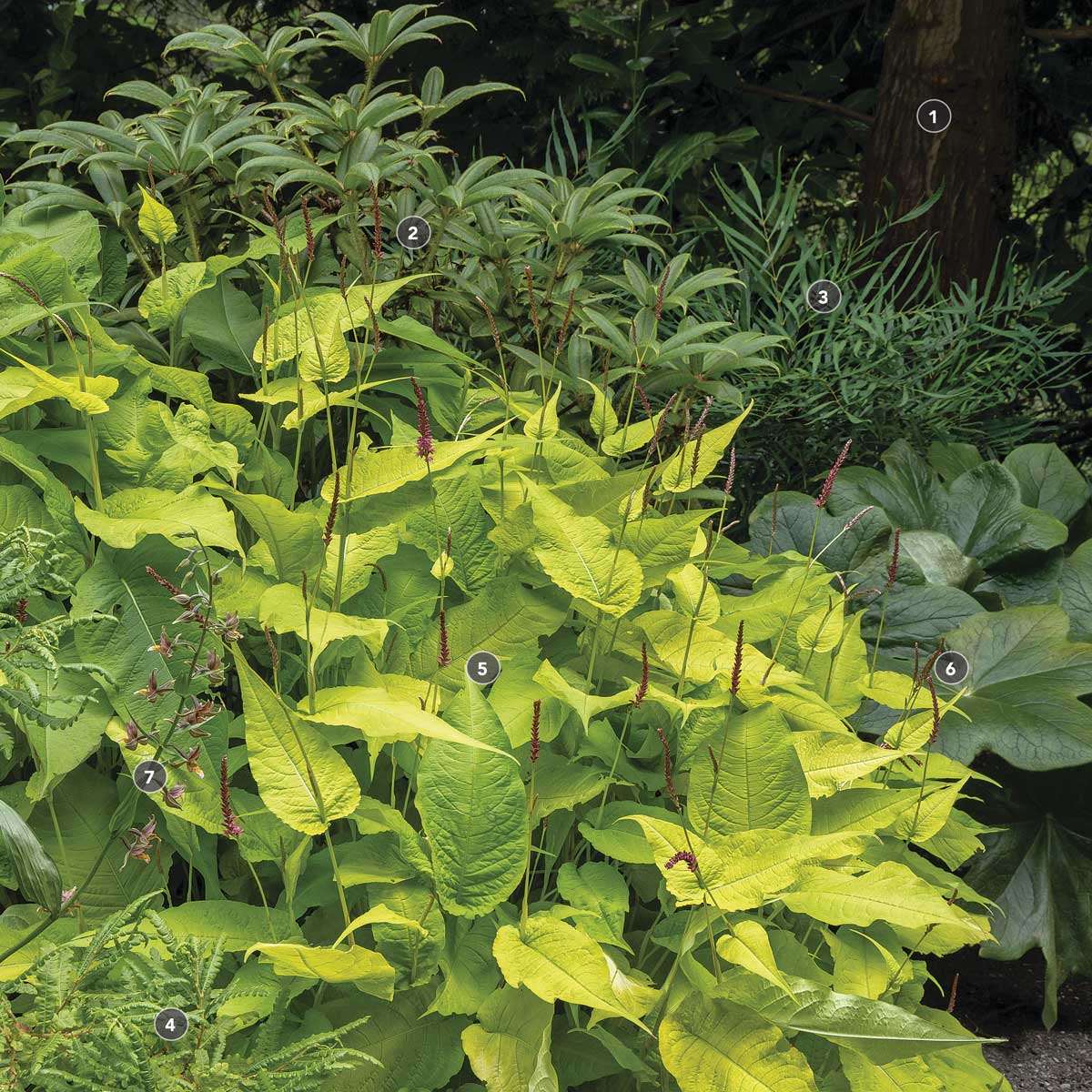
The garden pockets in this landscape were carved out from the surrounding woods and built to bridge the gap between the cultivated spaces and the wild area. Your native surroundings may not be woodland, but the same basic principles can be implemented. Three main layers make this planting approach possible. See the entire garden here.
Layers and Plants for a Garden in the Woods

|Layer 1|
Using a native backdrop
The native surroundings are always the jumping-off point in developing this type of planting plan. Here, the Western red cedar, which was already present, provides the dark green backdrop. A native rhododendron was added to fill the open space below the tree canopy, while the mahonia, a nativar, does the same and offers textural contrast.
Key Plants
1. Western red cedar (Thuja plicata, Zones 5–8)
2. Rhododendron (Rhododendron cv., Zones 5–9)
3. ’Soft Caress’ mahonia (Mahonia ‘Soft Caress’, Zones 7–11)
|Layer 2|
Add unusual fillers from a similar habitat
Look for eye-catching ornamental plants that come from similar conditions, but perhaps a different native range, to find suitable companions for the native plants. Highly textured sweet fern, an eastern U.S. native, loves partially shaded forest edges, so it’s a perfect match for this space. Similarly, the bright golden knotweed is native to woodland edges in the Himalaya region, so it’s naturally right at home in this location.
Key Plants
4. Sweet fern (Comptonia peregrina, Zones 2–8)
5. ‘Golden Arrow’ knotweed (Bistorta amplexicaulis ‘Golden Arrow’, Zones 4–9)
|Layer 3|
Finalize with understory ground covers that mimic the natural floor
Finally, ask yourself, “What does the floor of my native surroundings look like?” Is it filled with an occasional creeping succulent, or perhaps a knitted mass of prairie grasses? Then that is what the ground layer of your garden should mimic. In the Pacific Northwest, broad-leaved, moisture-loving perennials cover the native forest floor, so we planted mayapples and a series of stream orchids to cover the ground in a similar fashion.
Key Plants
6. Chinese mayapple (Podophyllum pleianthum, Zones 5–9)
7. Stream orchid (Epipactis ‘Sabine’, Zones 5–9)
Susan Calhoun is the owner of Plantswoman Design in Bainbridge Island, Washington.


















Comments
Log in or create an account to post a comment.
Sign up Log in